Switch to the mobile version of this page.
Vermont's Independent Voice
- News
- Arts+Culture
- Home+Design
- Food
- Cannabis
- Music
- On Screen
- Events
- Jobs
- Obituaries
- Classifieds
- Personals
Browse News
Departments
-
Education

Scott Official Pushes Back on Former State…
-
News

Burlington Budget Deficit Balloons to $13.1 Million
-
Education

Senate Committee Votes 3-2 to Recommend Saunders…
- Court Rejects Roxbury's Request to Block School Budget Vote Education 0
- Norwich University Names New President Education 0
- Media Note: Mitch Wertlieb Named Host of 'Vermont This Week' Health Care 0
Browse Arts + Culture
View All
local resources
Browse Food + Drink
View All
Browse Cannabis
View All
-
Culture

'Cannasations' Podcaster Kris Brown Aims to 'Humanize'…
-
True 802

A Burlington Cannabis Shop Plans to Host…
-
Business

Judge Tosses Burlington Cannabiz Owner's Lawsuit
-
Health + Fitness

Vermont's Cannabis Nurse Hotline Answers Health Questions…
-
Business

Waterbury Couple Buy Rare Vermont Cannabis License
Browse Music
View All
Browse On Screen
Browse Events
Browse Classifieds
Browse Personals
-

If you're looking for "I Spys," dating or LTRs, this is your scene.
View Profiles
Special Reports
Pubs+More
Raising Homes: It Takes a Village to Grow Housing. How Vermont Towns Are Trying to Make It Happen
Locked Out Series, Part 6
Published June 15, 2022 at 10:00 a.m. | Updated December 6, 2022 at 8:12 p.m.
As he travels Vermont, Tyler Maas sees a possible remedy to the housing crisis hiding in plain sight. It is the accessory dwelling unit, or ADU — the rather unwieldy name for a converted shed, home or garage apartment that can multiply the residential capacity of a single lot.
"The ADU potential is everywhere — that's the beauty of it," said Maas, who, as ADU program director for the Vermont State Housing Authority, regularly sings their praises to town housing committees, nonprofit agencies and other groups. To Maas, encouraging the construction of ADUs is one relatively easy way for towns to address a shortage of middle-income housing.
"Everyone talks about hitting the 'missing middle,' and this really is it," he said.
About this Series
Seven Days is examining Vermont's housing crisis — and what can be done about it — in our Locked Out series this year. Send tips to
[email protected].
These stories are supported by a grant from the nonprofit Journalism Funding Partners, which leverages philanthropy and fundraising to boost local reporting. For more information, visit jfp-local.org.
This shortage of mid-priced homes is increasingly the concern of Vermont's municipalities, which are trying to fill the void with the limited tools at their disposal.
Although Vermont lawmakers have directed millions of dollars to affordable housing programs for low-income residents in recent years, the state also has a severe shortage of homes for people who earn too much to qualify for those programs — the teachers, nurses, police officers and other middle-wage earners who are in high demand for thousands of vacant jobs. And there's very little state or federal support for such housing.
Towns are stepping in to fill that vacuum by revamping their zoning bylaws, joining with private landowners to encourage development of affordable housing and taking advantage of state programs aimed at reducing regulatory hurdles for new projects. Communities are tapping into a torrent of new federal funding to tackle one of the biggest obstacles to housing development across much of Vermont: a lack of public infrastructure.
"Everybody is about affordable housing, but you can't get there unless you set the stage, and the stage is water and sewer," said Katie Buckley, an official at the Vermont League of Cities & Towns who helps communities make use of federal aid. "Water and wastewater is sort of foundational for everything."
That's why many towns are studying how much it would cost to improve their water and sewer capacity. Hinesburg passed an $11 million bond last year to update its wastewater treatment facility. For more than a decade, Westford has been working on a proposed community wastewater treatment system, which would allow construction of more affordable, multifamily buildings in its village center.
Water and sewer systems are expensive, but millions of dollars in federal infrastructure funds have been made available as a result of the pandemic. "Any town that is contemplating doing it, do it now," Buckley said. "There's plenty of money, which will never happen again."
Apart from the infrastructure funds, cities, towns and villages are getting their shares of $200 million sent to Vermont through the American Rescue Plan Act. Hinesburg planning and zoning director Alex Weinhagen said his town's affordable housing committee has been looking into whether some of its $1.3 million in ARPA funds could be used to alleviate the town's housing shortage.
Will Hinesburg embrace the humble ADU, as Montpelier was just starting to do? In 2019, the housing authority, which manages the federal Section 8 housing voucher program in Vermont, started offering $20,000 grants to help Capital City property owners convert garages and sheds or build apartments in their homes. Four Montpelier ADUs were completed before the pandemic derailed construction plans, Maas said; three more are in the works. The Town of Woodstock recently hired someone to shepherd homeowners through the ADU permit process and help them obtain state and federal funding.
Looking for housing?
Are you having trouble finding affordable housing? Check out Seven Days' Vermont Housing Resources Guide, which lists public and private organizations that help qualifying Vermonters find shelter and rent, purchase and maintain homes.
Housing can be an intensely local issue, and individual municipalities are addressing the shortages in individual ways. But some towns are starting to collaborate with each other, as well as with regional nonprofits and housing agencies. They almost have to, said Chris Campany, executive director of the Windham Regional Commission, which is part of a large housing coalition in southern Vermont.
"Things have gotten way more sophisticated and require commitments of time and institutional knowledge and professional knowledge, beyond just volunteers taking this stuff on," Campany said.
Seven Days took a close look at how five communities across the state — an assortment of ski towns, tony second-home enclaves, rural villages and cities — are grappling with the unmet demand for affordable homes. No two communities are exactly alike. They are economic powers and tiny burgs, haves and have-nots, but all share a sense of urgency in the face of a deepening crisis.
Woodstock: 'Walkable,' 'Lovely'... and Unaffordable
Steering her electric MINI Cooper past one historic home after another, housing activist Jill Davies narrated how the clapboard structures fit into Woodstock's housing crisis.
One house was empty and being renovated. A few others appeared vacant. A rambling giant close to the road, she noted, had started out as two houses but was converted to one.
Davies, who is retired, understands why newcomers are paying big money to buy homes in the storybook version of Vermont that is Woodstock. The grand 19th-century homes radiate a stately perfection that seems all the more authentic for the few more modest residences still to be seen here and there. Hilly, winding lanes leading from town show a charming medley of homes, and the 643-acre Marsh-Billings-Rockefeller National Historical Park lies just steps away from the green.
"You can't blame anyone for wanting to live here," said Davies, who occupies a home in the village. "It's walkable. It's lovely."
But that appeal has made it nearly impossible for most people to settle in the resort town, or anywhere nearby. With little real estate for sale or rent — and none priced for people who earn around the area's median income of $61,500 — town staff and volunteers are seeking creative ways to encourage construction.
Woodstock's Economic Development Commission, which runs a grant program funded by the town's 1 percent local option tax, will spend about $100,000 this year on pilot programs aimed at expanding the housing supply.
One initiative would pay homeowners who convert short-term rentals to long-term rentals. Another would reward homeowners who construct an ADU. Woodstock has hired a housing adviser to help community members navigate the ADU permit process. And the EDC's housing working group — which Davies chairs — is examining a plan that would pay small developers to build new housing.
Davies would also like the town to adopt a program promoted by a Colorado-based nonprofit organization called Vail InDEED. It would pay homeowners to add deed restrictions in order to reserve dwellings as primary residences for people working locally at least 30 hours per week. She hopes Woodstock's programs can become a model for Vermont.
Housing advocates agree that solutions will likely be small in scale. Maintaining the antique look is critical to the tourism that sustains Woodstock's economy.
"The solution is going to be a little here, a little there, and there is obviously sensitivity about where those units are, about maintaining the character of the village," said Mark Scully, who owns the Vermont Eclectic gift shop. "I just don't think anyone is going to be putting up a large apartment building."
The town is also reviewing its zoning regulations to make development easier. Woodstock requires two parking spaces for each ADU, but the selectboard may reduce that to one, said Keri Cole, a real estate agent and selectboard member. Cole would like to see more developments that mix apartments and commercial space. "We do have spots in the village that would work really well for that," she said.
Cole noted that residents fought for 12 years to block the Safford Commons affordable housing development, which opened in 2015 and is growing.
Housing developments are "always controversial," she acknowledged. "I would hope that the culture of NIMBYism has lessened, but I know that it hasn't."
Last week, the lowest-priced Woodstock house on Zillow was a three-bedroom ranch listed for $629,000. That's out of reach for Woodstock's teachers, municipal employees and restaurant servers, said Davies, who works to dispel the notion that everyone in town is wealthy. She knows locals who were recently evicted because their rental homes were put up for sale by the owners.
It strikes her as unfair that "normal people," as she calls them, are being pushed out by well-heeled newcomers.
Houses are under construction: high-end homes sprouting on the hilltops. And for the less wealthy, work is under way on four more units at Safford Commons.
Town officials aren't the only ones tackling the shortage. Unable to find a house her family can afford to buy, Woodstock renter Robin Tindall has taken to writing to people who own vacation homes, asking whether they'd consider selling to her. Tindall scours town tax records for information on houses that appear vacant.
"If the mailing address is Commonwealth Avenue in Boston, which a lot of them are, I know it's just a second home," Tindall said. "I've said, 'I'll buy your house, and you can come back three weeks a year for perpetuity and have your vacation.'"
Tindall grew up in what is now Killington and graduated from Woodstock Union High School. Things have changed.
"I feel like the town — and perhaps large chunks of the whole state — are becoming a sort of Disneyland," she said.
— A.W.A.
Ideas are flowing in the Mad River Valley
click to enlarge 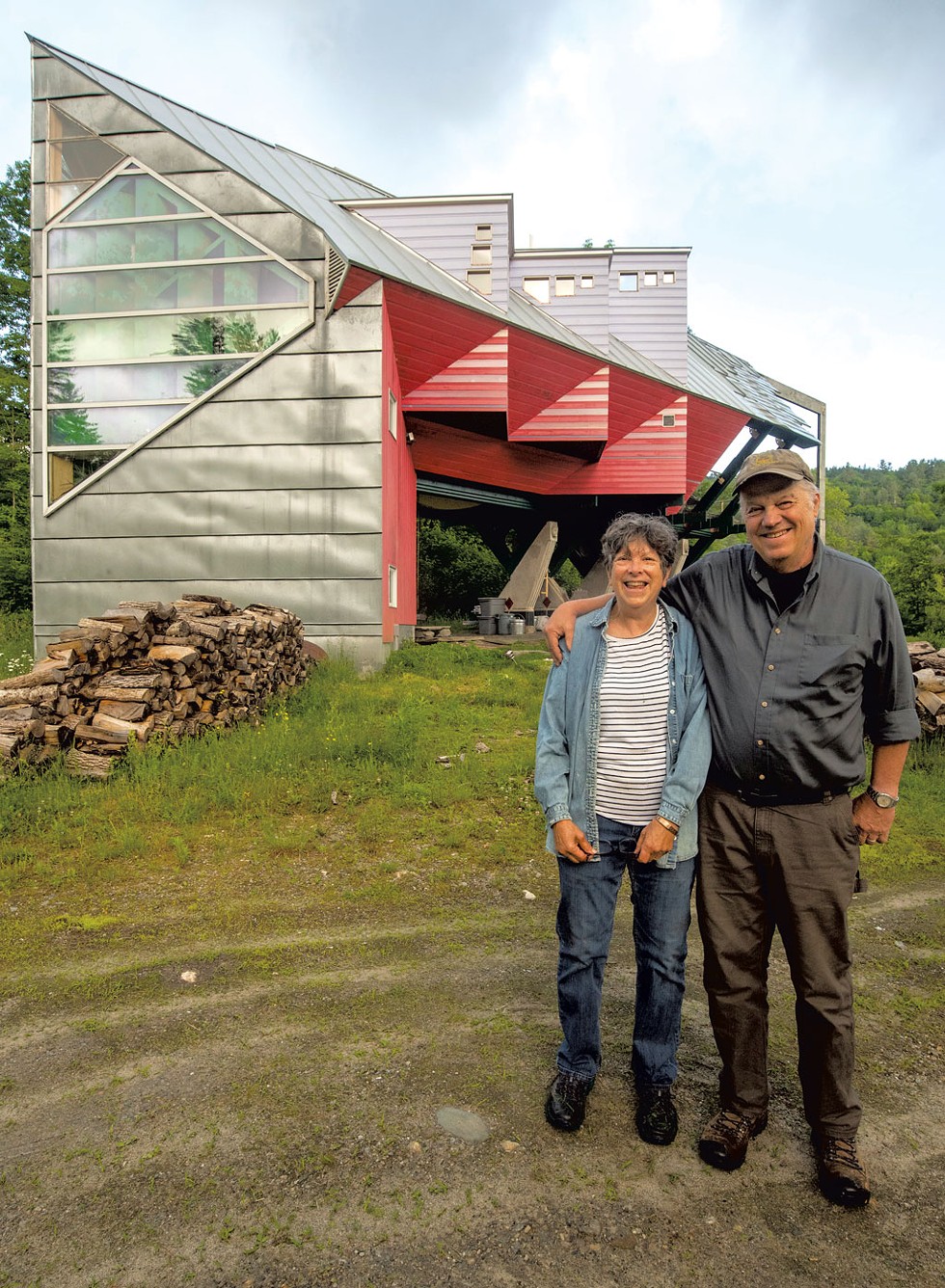

- Jeb Wallace-Brodeur
- Bobbi and Mac Rood at their Waitsfield home, which was a project of the local Yestermorrow Design/Build School
Mac Rood knows he can't solve the Mad River Valley's housing shortage alone. But with 10 acres of land and decades as a builder and architect, he's hoping to close the gap at least a little.
Rood and his wife, Bobbi, are clearing land at their home in Waitsfield to create eight building lots. They'll rely on selling the lots at $34,000 apiece to pay the up-front costs of a community sewer system, road and power. The lots are small, and the homes will be limited to 2,000 square feet.
Rood, who has lived in the valley since 1973, thinks other landowners could borrow from his model — which employs a little-used Waitsfield zoning bylaw that promotes affordable housing — to tackle the housing problems dogging rural Vermont.
"If people look around where they are living, they could say, 'Maybe I could build one extra house here. Maybe I could build five extra houses here. Maybe I could just build an ADU," Rood said.
Efforts to create more housing in the contiguous resort towns of Fayston, Warren and Waitsfield go back decades. The towns are addressing the housing problem individually, through their own planning and zoning offices, and together through the Mad River Valley Planning District, a nearly 40-year-old joint venture funded by the towns and the Sugarbush ski resort.
In addition, Rood and other builders and architects created the nonprofit Mad River Valley Housing Coalition in 1989 to confront the need for affordable housing. Through the coalition, experienced local volunteers help people assess the permitting and construction costs of home building. The group commissioned a study of the area's housing market in 2020 and in January hired Michelle Leibowitz, a part-time consultant with years of housing policy experience, to run the nonprofit.
At the same time, Waitsfield is hiring a consultant to recommend zoning changes with an eye to make home construction easier. And Warren has undertaken a multiyear overhaul of its regulations to enable more density, said Amy Tomasso, a community planner for the Mad River Valley Planning District. The towns have already reduced lot size requirements to increase density in their downtowns.
Tomasso also would like towns to change their zoning bylaws to accommodate tiny homes.
Dave Sellers, creator of the small, eclectic Madsonian Museum of Industrial Design in Waitsfield, is focusing this summer's exhibits on housing. He thinks municipal zoning adjustments aren't enough to solve the housing shortage.
"We think the shopping centers should be owned by a community group in Waitsfield," he said, "and then we can get donated money and make that land available for housing."
While local rental homes are available, landlords are increasingly converting them to list on short-term rental sites such as Airbnb, Vrbo and Booking. AirDNA, which provides short-term rental data, said the area had 465 listings in April.
People are moving to town, the housing coalition's 2020 study found, but most of the new residents are in households making $100,000 a year or more — far above the area's median income. Homes sold in Waitsfield or Warren last year went for a median price of around $330,000, well in excess of the statewide figure of $270,000.
As a result, "We're having trouble providing housing for just regular middle-income working people," Rood said. "Half the restaurants are closing or reducing their hours because they can't find people to work. Ultimately, you wonder what is going to happen if there are no mechanics, no doctors, no checkout clerks at the supermarket."
Any new development in the Mad River Valley's core shopping and pedestrian district would require some investment in water and wastewater infrastructure. The towns are studying how much that would cost, said JB Weir, Waitsfield's zoning administrator.
Rood has figured it out on a small scale. Using his own land puts him ahead of other developers because he doesn't have to worry about a repayment schedule or come up with a return that would please partners or investors. Work on his project started two years ago, and construction on the first home is expected to begin in August. All of the lots are already spoken for.
Rood expects that adding road, power and the shared septic system will ultimately cost homeowners around $36,000 more than the purchase price of the land, for a total cost of around $70,000. If it comes in at less than that, he said, any money left over will be returned to the purchasers. His goal is to break even on the land.
He's also sidestepping another big obstacle to development — neighborhood opposition — by building on his own property. The small community he envisions has no immediate neighbors. Rood said nobody raised objections to the plan during the permitting process, and he noted that a nearby landowner is interested in doing something similar. Rood looks forward to having people move in.
"This is all about creating community and a neighborhood," he said.
— A.W.A.
SoBu: The metamorphosis
When Ilona Blanchard commutes to her office in South Burlington's sleekly renovated city hall, a cuboid structure with a solar-paneled roof, she sees a long-awaited vision slowly coming to life — residents cycling to nearby South Burlington High School and parallel parking along the street in front of the municipal building.
"Parallel parking in South Burlington — that's a big change," said Blanchard, the city's director of community development.
Hundreds of new homes planned in this same area would represent an even bigger change.
For more than three decades, South Burlington has aspired to shed its image as a strip mall metropolis and create something resembling a cohesive, walkable downtown, according to planning and zoning director Paul Conner. To achieve that Busytown vibe, South Burlington has committed nearly $25 million to transform a 300-acre area off Interstate 89, between the traffic-choked thoroughfares of Williston Road and Dorset Street, with their looming big-box stores and street-facing parking lots. The vision: a walkable, bikeable urban core that will feature mixed-income housing, stores and office buildings, plus green space for recreation.
To subsidize this transformation, South Burlington has used a funding mechanism known as tax increment financing, which allows municipalities to borrow against the future revenue that will, ideally, result from new development. In the late 1990s, Burlington used TIF to revitalize its Lake Champlain waterfront, yielding an $80 million increase in taxable property value, and Winooski created a TIF district in the early 2000s to improve its sidewalks, streets, and sewer and water infrastructure. Seven municipalities around the state, including South Burlington, St. Albans and Barre, currently have TIF districts.
As the demand for homes has soared, South Burlington has grappled with how to rein in its suburban sprawl, which has gobbled up land on the outskirts of the city's built-up commercial districts. One of the objectives of South Burlington's TIF district is to finance the public infrastructure — the parks, bike and pedestrian routes, crosswalks, and new municipal building, where Conner and Blanchard both work — that will attract privately built housing around an energized downtown nucleus, thus relieving some of the threat to the city's greener reaches.
"We're hoping that we're creating the conditions so that decades from now we'll have a thriving downtown and a thriving community," Conner said. "It's really exciting to see this all come together in time to help address a piece of this really big statewide housing shortage."
Not far from city hall, developer Snyder-Braverman recently broke ground on a 60-unit complex called Union Place. The project received a $2.8 million boost from the University of Vermont Medical Center, which plans to use the apartments to house its own employees — an arrangement that other employers, including Middlebury College and Northern Stage in White River Junction, have emulated as their workers struggle to find housing.
As part of the planned makeover, this year South Burlington voters approved a $4 million TIF bond to finance the construction of Garden Street, a pedestrian- and bicycle-friendly corridor that will serve as a connector between Dorset Street and Williston Road. At one end of Garden Street, near a Trader Joe's store, Snyder-Braverman has received preliminary approval for a 120-unit apartment complex for people of varied incomes. In total, according to Blanchard, the city anticipates the construction of at least 800 more housing units throughout the downtown core in the coming years, two-thirds of which will be built by Snyder-Braverman.
TIF bonds must be approved by voters, and the city will ask for a last round of funding next year to continue its streetscape renovations, including the completion of Garden Street and the addition of bike lanes to Williston Road. So far, Blanchard said, the public has been overwhelmingly supportive of these initiatives, but she isn't counting her chickens just yet. "These projects are backed by the full faith and credit of the community, and even if the tax revenue doesn't come, we still have to pay for them," Blanchard said.
A downtown metamorphosis on this scale is slow going, heralded by milestones that only die-hard infrastructure heads would toast. In the late 1980s, according to Conner, Dorset Street became the first major roadway in Vermont to have its utility lines buried in preparation for the construction of a multiuse path for bicycles and strollers. South Burlington has come a long way since then: The city now manages nearly 24 miles of bike and recreational trails. In 2025, construction will begin on a bike and pedestrian crossing on the I-89 overpass that connects Burlington and South Burlington, funded by a $9.7 million federal grant.
Blanchard, who often takes the bus or bikes to work, sees in these changes an evolution far more profound than the advent of parallel parking in front of city hall. "We're trying to shift the perception of South Burlington away from a car-friendly corridor to a place where people have lots of choices about how they get around," she said.
With any luck, those people might even be able to find a place to live.
— C.E.
Westford Ho!
Like nearly 200 other municipalities across the state, the rural Chittenden County town of Westford has no public wastewater system. Not yet, anyway.
For more than a decade and a half, Westford, population 2,000, has been chipping away at an ambitious plan to install a community septic system. The concept, according to town planner Melissa Manka, is fairly simple: Landowners in a wastewater district would pay a monthly fee — ideally, between $75 and $100 — to connect their existing home septic tanks to municipal sewer lines. Waste would be pumped through a network of underground pipes into a leach field on a town-owned property just outside Westford's village center.
The only above-ground evidence of the system would be a small control box behind an old maple tree, across the street from the field where the effluent would rejoin the earth, and an unobtrusive control station on the quaint town green, which has an out-of-time feel. In the summertime, bluegrass bands play in the gazebo there. On a recent afternoon, two boys were bombing each other with fistfuls of dandelion fuzz.
Westford is one of 19 towns in Vermont trying to develop a community wastewater system, according to Lynette Claudon, the chief pollution control design engineer in the Department of Environmental Conservation's Water Infrastructure Division. Westford's project is now in the final stages of design and permitting, meaning that construction could begin as soon as the town secures the necessary state approvals — and voters give their blessing.
"I don't think we necessarily ever thought we'd even get to this point," Manka said. "At the beginning, it was just like, 'Oh, there's a grant to do this feasibility study!' or 'Maybe we can apply for this grant to study this aspect of the project or do that soil survey.'"
Until last year, the town's biggest source of funding for the project had been a $466,164 grant from the Northern Border Regional Commission, which supports economically distressed communities throughout New England. That money would have covered only a fraction of the cost, projected a few years ago to be $2.4 million — a figure, Manka said, that has almost certainly risen with inflation. But now, Westford expects a $2.4 million boost from a state wastewater initiative that is funded by ARPA. With that help, the dream of a municipal sewage system finally seems within reach.
But the town does not yet have the cash in hand. In order to use the money, Manka explained, the municipality first must set up a formal contract with the state, which would likely issue the funds as reimbursements for expenses stemming from the wastewater project. When such a contract might be written is unclear, she said.
To complicate matters, the project's lead contractor, Green Mountain Engineering, ceased operations in February due to lack of staff and an unmanageable workload, according to the Addison County Independent, forcing the town to find a new engineering firm. Manka said she does not know when the contract with the town's new prospective engineering firm, Stone Environmental, might be completed. Considering these uncertainties, and the lingering effects of the pandemic on nearly every aspect of this undertaking, from the price of materials to labor shortages, the community wastewater project might not be ready for a bond vote by next year's Town Meeting Day. (As Manka put it, "Not everything's completely solid yet, you know?")
Manka's colleague Kate Lalley works part time as Westford's zoning administrator, a role that primarily involves issuing permits for new projects. In her work, Lalley said, she often sees how the lack of a reliable public wastewater management system stymies even the most modest housing proposals — such as when a landowner wants to add a small ADU, or even a new bedroom. "In a rural place, you have to provide all your own infrastructure," Lalley said. And the cost of a new in-ground septic system — which, she said, usually ranges between $25,000 and $35,000 — is prohibitively expensive for most property owners.
Westfordians aren't clamoring for 50-unit apartment complexes, Lalley clarified. "That would be incredibly controversial here," she said. "We're looking for more incremental, organic growth — you know, stealthily adding an ADU here and there. No one would even notice. There would just be a few more people getting coffee every morning."
Many of the homes in Westford depend on old underground septic tanks, and the area's fine clay soils have poor filtration. The Westford Country Store and Café, which opened in 2020 in a historic building on the town green that had been vacant for years, has one apartment on its second floor, and there's enough square footage to add a second, Manka said. But given the building's aging septic system and the slow-draining soils, the owner wouldn't be able to accommodate two units upstairs and still maintain the kitchen operation on the first floor.
"People want a vibrant community here," Manka said. "Right now, you have to choose: 'Am I going to go for the apartment, or do I want a café?'"
— C.E.
Thinking big — and regionally — in Brattleboro
If Brattleboro and surrounding towns are going to boost their collective housing supply, it may be thanks to an array of public and private housing advocates who are taking on housing as a regional need, not a town-by-town one.
The group, which is known as the Southern Vermont Housing Coalition and includes several towns, is meeting to share ideas about solutions and to seek loans, grants and investment for housing projects.
Campany, the director of the Windham Regional Commission and a coalition member, sees the tendency of Vermont's cities and towns to work on the problems individually as badly outdated and the coalition as an improvement.
"Planning in Vermont is diffused across so many tiny units of government that it's hard to have the big picture of what is needed," Campany said. He noted that a recent Brattleboro housing study found that the market could absorb 500 units of housing immediately. He's pretty sure thousands of units are needed in southeastern Vermont overall.
The coalition estimates that 44 percent of Brattleboro's households spend more than a third of their gross income on housing costs.
Coalition chair Sue Graff said the group will aim to help its small-town members use their portions of federal COVID-19 money to get started on wastewater systems that would enable home construction in their village centers.
"There is an opportunity for compact development in our towns," she said. Brattleboro's ARPA share is about $3.3 million; Putney, another member of the coalition, is expected to get $734,000. That's not enough to build a sewer system by itself, but it could help defray costs of studies and permitting.
"It's not earmarked for housing in any way, but it certainly is appropriate for infrastructure, and we're trying to encourage that," Graff said.
Banding together makes sense when expanding wastewater capacity, Campany said. And finding a suitable place for new housing in one small town could serve the needs of neighboring communities.
"Maybe the solution for one town really lies in a conversation among four towns," he said.
Coalition members have high hopes for a housing project envisioned for the campus of the Winston Prouty Center for Child and Family Development, which acquired 177 acres when it bought the former Austine School in 2016. The center oversees a housing program for struggling families and is a coalition member.
"Land is a pretty big part of what gets in folks' way" when developers are assessing the price of new housing, executive director Chloe Learey said. "And we have land. We have an asset for the community."
The planned Winston Prouty housing project — a joint effort with a nonprofit that's affiliated with the Omega Optical campus next door — is years away. Brattleboro first plans to study the wastewater needs of the combined 300-acre site. Learey would like to see 100 to 200 units of housing rise there for low- and moderate-wage earners in the next two years.
"We're not talking single-family homes on little lots," she said. "We're talking apartments, condos, apartment buildings. The whole continuum has to be robust."
Brattleboro, the largest town in the coalition, is also taking steps as a municipality to make it easier to create new housing. In 2020, the town relaxed parking requirements to ease the way for property owners to add apartments to their homes downtown.
That program rapidly brought an estimated 30 apartments online, and its success caught the attention of housing policy advocates around the state. Planning director Sue Fillion noted that property owners were able to use emergency COVID-19 funding available at that time to renovate apartments.
Otherwise, she said, "there's been a house here and a house there, but there has been no significant housing development in the last 10 years at least."
Now, a consultant for Brattleboro is looking at another round of zoning changes in hopes of encouraging developers to choose downtown sites for multifamily housing, and the town is seeking proposals for senior housing to be built on an underutilized parking lot downtown.
Such measures work only at the edges of such a large and complex crisis; none will solve the area's housing shortfall alone. But officials see promise in an approach that marshals disparate voices and ideas from across southern Vermont.
"It's about breaking down some of the barriers that maybe contribute to higher housing costs," Fillion said. "It's making sure we are providing lots of options."
— A.W.A.
 Seven Days is examining Vermont's housing crisis — and what can be done about it — in our Locked Out series this year. Send tips to [email protected]. These stories are supported by a grant from the nonprofit Journalism Funding Partners, which leverages philanthropy and fundraising to boost local reporting.
Seven Days is examining Vermont's housing crisis — and what can be done about it — in our Locked Out series this year. Send tips to [email protected]. These stories are supported by a grant from the nonprofit Journalism Funding Partners, which leverages philanthropy and fundraising to boost local reporting.
Got something to say?
Send a letter to the editor
and we'll publish your feedback in print!
About The Authors

Chelsea Edgar
Bio:
Chelsea Edgar is a staff writer for Seven Days, and has written for BuzzFeed and Philadelphia magazine.
Chelsea Edgar is a staff writer for Seven Days, and has written for BuzzFeed and Philadelphia magazine.

Anne Wallace Allen
Bio:
Anne Wallace Allen covers breaking news and business stories for Seven Days. She was the editor at the Idaho Business Review and a reporter for VTDigger and the Associated Press in Montpelier.
Anne Wallace Allen covers breaking news and business stories for Seven Days. She was the editor at the Idaho Business Review and a reporter for VTDigger and the Associated Press in Montpelier.
Latest in Category
Speaking of...
-

Barre to Sell Two Parking Lots for $1 to Housing Developer
Apr 22, 2024 -

Home Is Where the Target Is: Suburban SoBu Builds a Downtown Neighborhood
Apr 16, 2024 -

State Will Build Secure Juvenile Treatment Center in Vergennes
Apr 15, 2024 -

Pauline's Café Closes in South Burlington After Almost Half a Century
Apr 15, 2024 -

Ethics Panel Dismisses Complaint Against Ram Hinsdale
Apr 11, 2024 - More »



























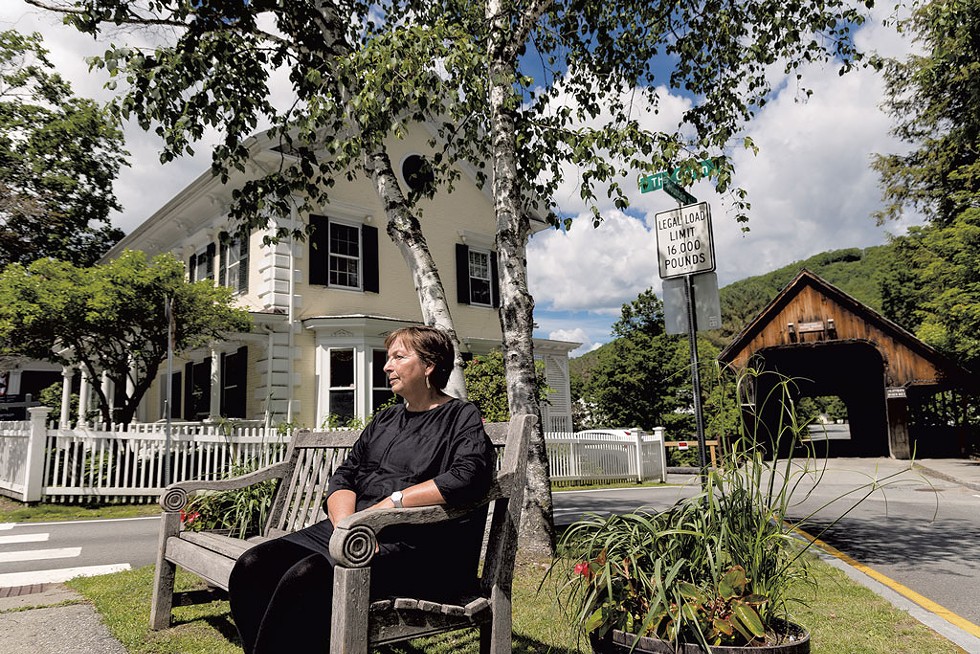
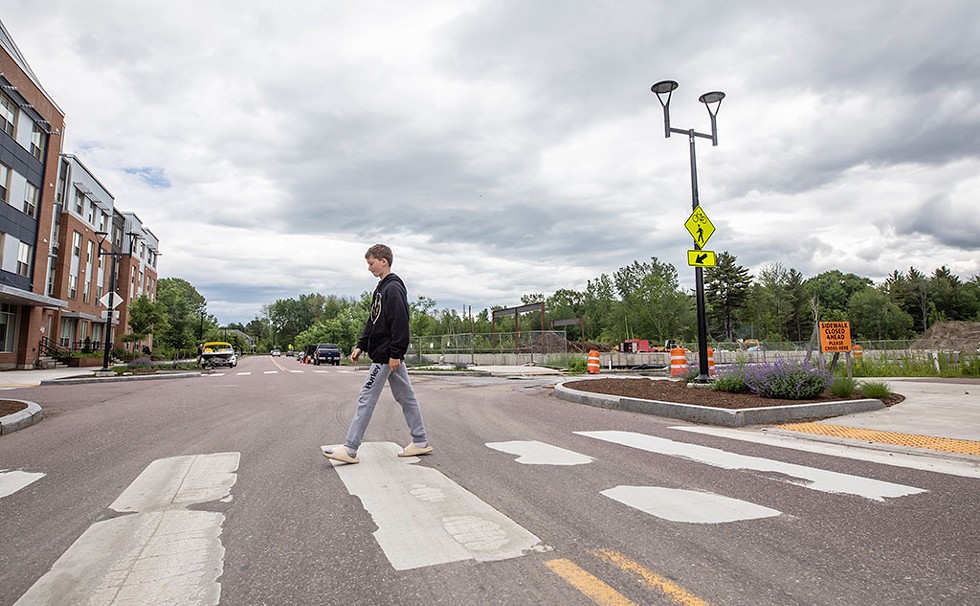
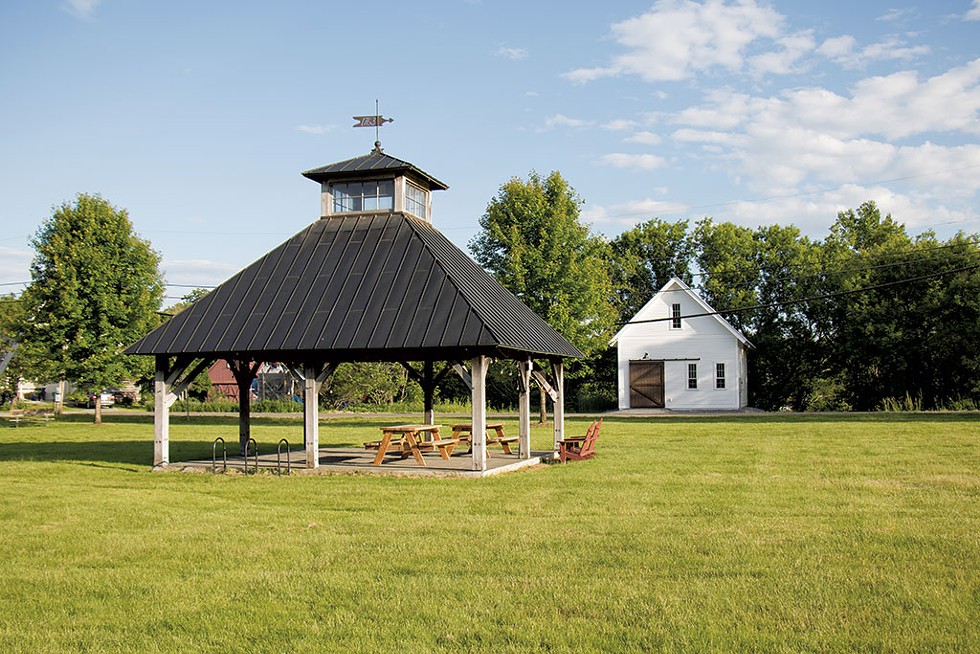
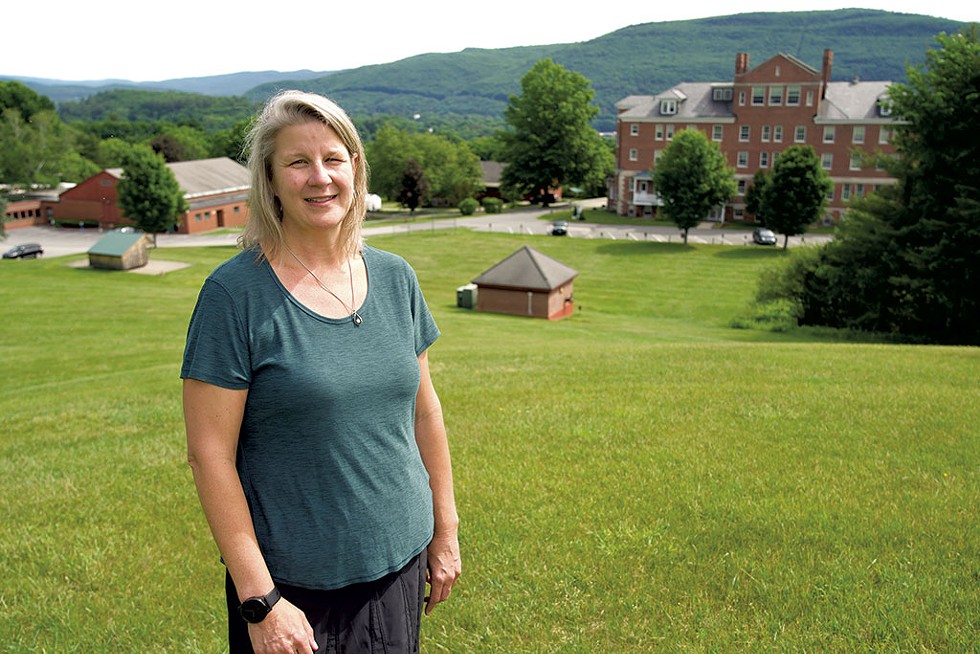

























find, follow, fan us: